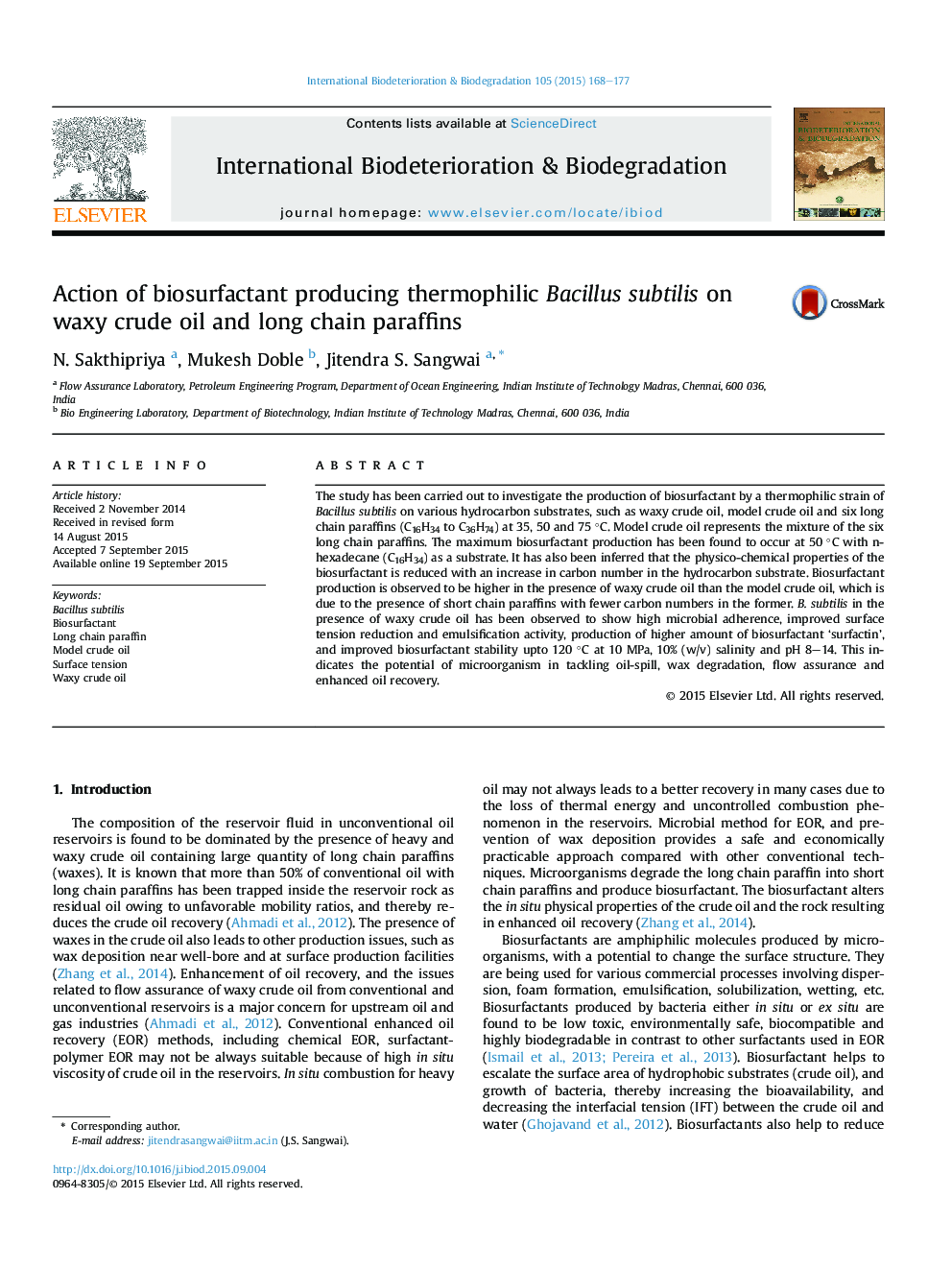| Article ID | Journal | Published Year | Pages | File Type |
|---|---|---|---|---|
| 4364325 | International Biodeterioration & Biodegradation | 2015 | 10 Pages |
•Biosurfactant production with various hydrocarbon substrates has been investigated.•Utilization of Bacillus subtilis for biosurfactant production at 35, 50 and 75 °C.•The biosurfactant production is observed to be the maximum for C16 system.•Waxy crude oil has shown better performance than the model crude oil.•Stability of biosurfactant upto 120 °C, 10 MPa, 10% (w/v) salinity, and above pH 8.
The study has been carried out to investigate the production of biosurfactant by a thermophilic strain of Bacillus subtilis on various hydrocarbon substrates, such as waxy crude oil, model crude oil and six long chain paraffins (C16H34 to C36H74) at 35, 50 and 75 °C. Model crude oil represents the mixture of the six long chain paraffins. The maximum biosurfactant production has been found to occur at 50 °C with n-hexadecane (C16H34) as a substrate. It has also been inferred that the physico-chemical properties of the biosurfactant is reduced with an increase in carbon number in the hydrocarbon substrate. Biosurfactant production is observed to be higher in the presence of waxy crude oil than the model crude oil, which is due to the presence of short chain paraffins with fewer carbon numbers in the former. B. subtilis in the presence of waxy crude oil has been observed to show high microbial adherence, improved surface tension reduction and emulsification activity, production of higher amount of biosurfactant ‘surfactin’, and improved biosurfactant stability upto 120 °C at 10 MPa, 10% (w/v) salinity and pH 8–14. This indicates the potential of microorganism in tackling oil-spill, wax degradation, flow assurance and enhanced oil recovery.
